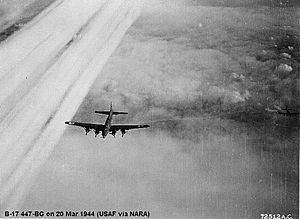Royan pocket facts for kids
The Royan pocket (called Poche de Royan in French) was an area in France that German soldiers held onto during the final parts of World War II. It was one of several "Atlantic pockets" – places where German troops were left behind as their main army moved away from occupied France. The German leaders wanted to keep control of these areas. This was because they had important ports that the Allied forces (like the Americans, British, and French) could use.
Contents
What Was the Royan Pocket?
The Germans called this area Festungen Girondemündung Nord und Süd, which means "fortresses north and south of the Gironde estuary." The Royan pocket was not just the city of Royan itself. It also included the Arvert peninsula and the island of Oléron to the north of the Gironde River. To the south, it stretched from Pointe de Grave to Saint-Vivien-de-Médoc and Vensac.
The Attack on Royan
By the autumn of 1944, the Royan pocket was surrounded. Plans were made to attack and capture it, under the name "Operation Independence." However, these plans were put on hold when the Germans launched a big attack called the Ardennes Offensive in December.
First Attacks on Royan City
The first target was the city of Royan. About 5,500 German soldiers were defending it, and 3,000 French civilians lived there. On January 5, 1945, the RAF (British Royal Air Force) bombed the city. But no ground attack followed, so the fighting stopped for the next three months.
Major Allied Attack in April 1945
In April 1945, a huge attack began. French General Edgard de Larminat led the Allied troops in "Operation Vénérable." This operation included:
- Bombings by the USAAF (United States Army Air Forces) on April 14 and 15.
- Bombardment from ships led by Vice-Admiral Joseph Rue.
- A land attack by the French 10th Division and the American 66th US Division.
The French military leaders wanted to take back their ports by force. They did not want to wait for the Germans to surrender. About 1,000 planes, including those from the USAAF's 447th Bomb Group, heavily bombed the city. Royan was almost completely destroyed, and about 1,500 civilians died.
Use of Napalm
During the attack, 27,000 artillery shells were fired at Royan. The city also saw one of the first times napalm was used in war. On April 15, 1945, Allied bombers dropped napalm, which is a type of flammable jelly. It turned the city into "a blazing furnace."
After Royan
After Royan was captured, Ile d'Oléron (Oléron Island) was also taken in an operation called "Opération Jupiter." General de Larminat then planned to capture La Rochelle next, in "Opération Mousquetaire." However, this plan was canceled because Germany surrendered.
French soldiers from the 50th and 158th Regiments of the French 23rd Infantry Division (also known as Division de marche Oléron) took part in these operations. They fought alongside the French 2nd Armored Division and other units.


